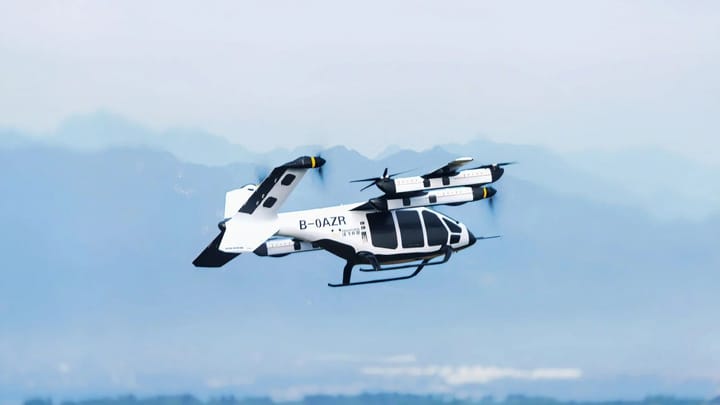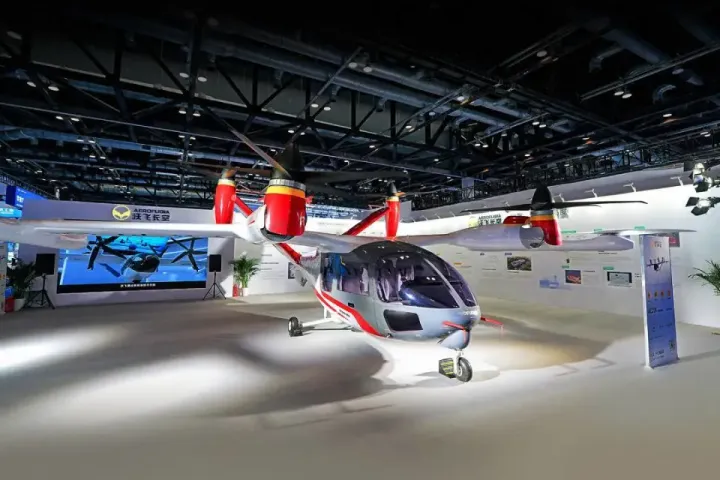From Airworthiness Certification to Test Flights: How Far Is Manned eVTOL from Widespread Use?

At the Shanghai International Advanced Air Mobility Expo (IAAME) forum, industry experts discussed the latest advancements in electric vertical takeoff and landing aircraft (eVTOL). From technical validation to commercial operations, eVTOL is steadily turning the vision of low-altitude manned travel into reality, though significant challenges remain.
Shanghai Vertaxi Aviation Technology Co., Ltd. founder and CEO Xie Ling stated that eVTOL, as a second point-to-point transportation option after automobiles, is integrating into daily life. However, unlike traditional civil aviation, which limits new technologies to under 10%, eVTOL must balance high safety with unproven innovations. He emphasised that achieving commercial viability requires official safety endorsements, cost-effective designs, pilot qualification standards, operational rules, infrastructure such as takeoff/landing sites, charging stations, airspace management systems, and supportive regulations. "Only by balancing high safety and economic efficiency can eVTOL usher in a scaled era," Xie noted.
Aerofugia's Chief Marketing Officer (CMO) Fei Lan added that the company's initial eVTOL commercial operations will target a market priced 2-3 times higher than premium ground taxis. With future tech improvements in batteries and motors, plus supply chain optimisations, costs are expected to drop, making low-altitude travel more accessible. Shanghai Tcab Tech Co., Ltd. co-founder Jiang Jun highlighted the need for a sustainable ecosystem where manufacturers, suppliers, and operators all profit to drive market growth.
In tourism commercialisation, He Yi Aviation officials told The Paper they are preparing for market operations through demonstration flights, with ticket sales still pending. As early as March 2025, EHang Intelligent (Nasdaq: EH) subsidiaries received China's first operational certificates (OC) for manned unmanned aerial vehicles from the Civil Aviation Administration of China (CAAC), marking the start of commercial low-altitude services.
EHang is following a three-step plan: load testing, manned trials, and routine operations. In Guangzhou and Hefei, sites are now in manned trial phases, offering rides to internal staff and invited passengers via booking platforms. He Yi Aviation stressed that safety is paramount, with pilots undergoing rigorous training, though real-world experience is being built through tests. Compared to traditional helicopters, EHang's eVTOL offers advantages in tourism, such as efficient unmanned operations that allow one ground team to control multiple aircraft, reducing labour costs.
The company plans to focus on tourism initially, starting with Hefei as a pilot and expanding globally, while collaborating with governments on airspace and site issues. EHang executives advocate a measured approach, using current cities as models before scaling to urban air mobility.
The industry is maturing, with top firms prioritising airworthiness certification. EHang's EH216-S eVTOL received the world's first unmanned manned type certificate in 2023. Shanghai-based companies like AutoFlight and Tcab Tech aim for certification by 2026-2027. Aerofugia's AE200 is in the fourth of five certification stages, targeting manned flight tests in 2025.
Xie Ling predicted that the "Year One" for low-altitude manned travel may arrive in three to five years. By 2030, Volant Aviation aims to operate in 30-40 cities, with broader rollout by 2035. Despite challenges like talent shortages, experts believe innovation and collaboration will pave the way, urging a focus on practical development over hype.


